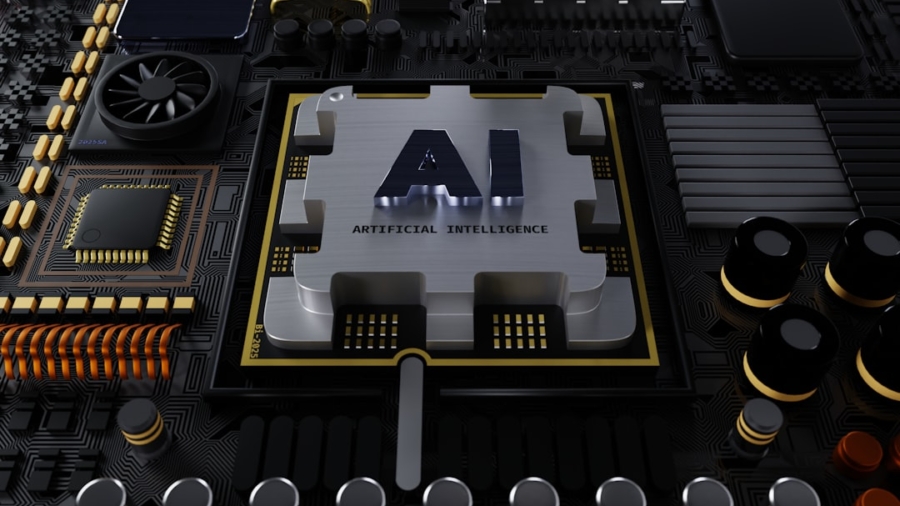The gaming industry has witnessed a remarkable transformation over the past few years, with artificial intelligence (AI) emerging as a pivotal force in various aspects of game development. Among these advancements, AI-powered game testing tools have gained significant traction, revolutionizing how developers ensure the quality and performance of their games. Traditionally, game testing was a labor-intensive process, often requiring extensive human resources to identify bugs, glitches, and gameplay issues.
However, the advent of AI has introduced a new paradigm, enabling developers to automate and streamline testing processes, thereby enhancing efficiency and accuracy.
As games become more intricate, with expansive worlds and intricate mechanics, the potential for bugs and performance issues escalates.
AI tools can analyze vast amounts of data quickly, identifying patterns and anomalies that human testers might overlook. This capability not only accelerates the testing process but also allows for more thorough examinations of gameplay elements, ultimately leading to a more polished final product.
Key Takeaways
- AI-powered game testing tools are on the rise, revolutionizing the way games are tested and quality assured.
- Using AI-powered game testing tools can lead to improved efficiency, accuracy, and cost-effectiveness in the game development process.
- AI-powered game testing tools work by utilizing machine learning algorithms to automate testing processes and identify potential issues in games.
- Challenges and limitations of AI-powered game testing tools include the need for extensive training data and potential biases in the AI algorithms.
- Integrating AI-powered game testing tools into development processes can streamline testing and QA, leading to faster and more reliable game releases.
Benefits of Using AI-Powered Game Testing and QA Tools
One of the most significant benefits of utilizing AI-powered game testing tools is the enhancement of efficiency in the testing process. Traditional manual testing can be time-consuming and prone to human error, often resulting in missed bugs or inconsistencies. In contrast, AI tools can execute tests at a much faster rate, simulating thousands of gameplay scenarios in a fraction of the time it would take human testers.
This rapid testing capability allows developers to identify and address issues early in the development cycle, reducing the risk of costly delays and ensuring that games are released on schedule. Moreover, AI-powered tools offer a level of consistency that is difficult to achieve with human testers. While human testers may have varying levels of expertise and may approach testing with different perspectives, AI algorithms apply the same criteria uniformly across all tests.
This consistency not only improves the reliability of test results but also enables developers to establish benchmarks for performance and quality. Additionally, AI tools can learn from previous testing outcomes, continuously improving their ability to detect issues over time. This adaptive learning capability ensures that as games evolve, the testing processes remain robust and effective.
How AI-Powered Game Testing Tools Work

AI-powered game testing tools leverage machine learning algorithms and data analytics to automate various aspects of the testing process. At their core, these tools utilize vast datasets derived from previous game builds, player interactions, and bug reports to train their models. By analyzing this data, AI systems can identify common patterns associated with bugs or performance issues, allowing them to predict where problems are likely to occur in new builds.
One common approach employed by these tools is automated regression testing. This involves running a suite of predefined tests on new game builds to ensure that previously functioning features remain intact after updates or changes. AI algorithms can intelligently select which tests to run based on historical data, focusing on areas that have shown a higher likelihood of failure.
Additionally, some AI tools incorporate natural language processing (NLP) capabilities to analyze player feedback from forums and social media, providing insights into potential issues that may not have been captured during formal testing.
Challenges and Limitations of AI-Powered Game Testing Tools
Despite their numerous advantages, AI-powered game testing tools are not without challenges and limitations. One significant hurdle is the initial investment required for implementing these systems. Developing and training AI models necessitates substantial resources, including access to large datasets and skilled personnel who can manage the technology effectively.
For smaller studios or independent developers, this upfront cost can be prohibitive, potentially limiting their ability to leverage AI in their testing processes. Another challenge lies in the complexity of accurately simulating human behavior within games. While AI can efficiently identify technical issues such as crashes or performance drops, it may struggle to replicate nuanced player interactions or emotional responses that are critical to gameplay experience.
For instance, an AI tool might not fully grasp how players react to specific narrative choices or character developments. Consequently, while AI can enhance technical quality assurance, it may not replace the need for human testers who can provide insights into the overall player experience.
Integrating AI-Powered Game Testing Tools into Development Processes
Integrating AI-powered game testing tools into existing development workflows requires careful planning and consideration. Developers must assess their current processes to identify areas where automation could yield significant benefits. This often involves collaboration between development teams and quality assurance (QA) personnel to ensure that the integration aligns with overall project goals.
One effective strategy for integration is to adopt a hybrid approach that combines both human testers and AI tools. By leveraging the strengths of each, developers can create a comprehensive testing strategy that addresses both technical performance and player experience. For example, while AI tools handle repetitive tasks such as regression testing or load testing, human testers can focus on exploratory testing and user experience evaluations.
This collaborative model not only enhances efficiency but also fosters a culture of continuous improvement within development teams.
Case Studies of Successful Implementation of AI-Powered Game Testing Tools

Several notable case studies illustrate the successful implementation of AI-powered game testing tools within the gaming industry. One prominent example is Ubisoft’s use of AI in their game “Watch Dogs: Legion.” The company employed machine learning algorithms to analyze player behavior data from previous titles in the franchise. By understanding how players interacted with various game mechanics, Ubisoft was able to fine-tune gameplay elements and identify potential bugs before launch.
This proactive approach significantly reduced post-launch issues and improved overall player satisfaction. Another compelling case study comes from Electronic Arts (EA), which integrated AI-driven testing tools into its development pipeline for sports titles like FIFEA utilized AI algorithms to simulate thousands of matches across different scenarios, allowing them to identify balance issues and gameplay anomalies quickly. The insights gained from these simulations enabled developers to make informed adjustments before releasing updates or new iterations of the game.
As a result, EA reported a marked decrease in post-launch patches related to gameplay balance, showcasing the effectiveness of AI in enhancing quality assurance processes.
Future Trends and Innovations in AI-Powered Game Testing and QA Tools
As technology continues to evolve, the future of AI-powered game testing tools promises exciting innovations that could further enhance their capabilities. One emerging trend is the integration of real-time analytics into game testing processes. By leveraging cloud computing and advanced data processing techniques, developers may soon be able to monitor player interactions in real-time during beta tests or live operations.
This capability would allow for immediate feedback on gameplay issues and enable developers to make rapid adjustments based on actual player behavior. Additionally, advancements in natural language processing (NLP) could lead to more sophisticated analysis of player feedback. Future AI tools may be able to interpret sentiment from player reviews or social media discussions more accurately, providing developers with deeper insights into player preferences and pain points.
This enhanced understanding could inform design decisions and help create more engaging gaming experiences tailored to player expectations.
Considerations for Choosing the Right AI-Powered Game Testing Tool
When selecting an AI-powered game testing tool, developers must consider several key factors to ensure they choose a solution that aligns with their specific needs and objectives. First and foremost is compatibility with existing development environments and workflows. A tool that seamlessly integrates into current processes will minimize disruption and facilitate smoother adoption.
Another critical consideration is scalability. As games evolve and development teams grow, it is essential that the chosen tool can adapt accordingly. Developers should look for solutions that offer flexibility in terms of features and capabilities, allowing them to scale up or down based on project requirements.
Furthermore, evaluating the level of support and resources provided by the tool’s vendor is crucial. Comprehensive documentation, training materials, and responsive customer support can significantly impact the successful implementation and ongoing use of an AI-powered game testing tool. In conclusion, as the gaming industry continues to embrace technological advancements, AI-powered game testing tools stand out as a transformative force in quality assurance processes.
By understanding their benefits, challenges, and future potential, developers can make informed decisions about integrating these innovative solutions into their workflows.
In the rapidly evolving landscape of game development, leveraging AI-powered tools for testing and quality assurance is becoming increasingly essential. A related article that delves into the technological advancements in consumer electronics, which often parallel innovations in game development, is “Unlock Your Creative Potential with the Samsung Galaxy Book Flex2 Alpha.” This article explores how cutting-edge devices can enhance productivity and creativity, much like how AI tools are revolutionizing game testing. For more insights, you can read the full article here.
FAQs
What are AI-powered game testing and QA tools?
AI-powered game testing and QA tools are software applications that use artificial intelligence and machine learning algorithms to automate and improve the process of testing and quality assurance in game development. These tools can analyze game performance, identify bugs and glitches, and provide insights to improve overall game quality.
How do AI-powered game testing and QA tools work?
AI-powered game testing and QA tools work by using machine learning algorithms to analyze game data, identify patterns, and predict potential issues. They can automate testing processes, generate test cases, and provide insights into game performance and quality. These tools can also learn from previous testing experiences to improve their accuracy and efficiency over time.
What are the benefits of using AI-powered game testing and QA tools?
Some of the benefits of using AI-powered game testing and QA tools include improved testing efficiency, faster bug detection and resolution, enhanced test coverage, and the ability to handle complex and repetitive testing tasks. These tools can also provide valuable insights and analytics to help game developers make informed decisions about improving game quality.
What are some popular AI-powered game testing and QA tools?
Some popular AI-powered game testing and QA tools include TestCraft, Appvance, Eggplant, and Testim. These tools offer a range of features such as automated test generation, predictive analytics, and intelligent test execution to help game developers streamline their testing and quality assurance processes.
Are AI-powered game testing and QA tools suitable for all types of games?
AI-powered game testing and QA tools can be used for a wide range of games, including mobile games, PC games, console games, and virtual reality games. However, the suitability of these tools may vary depending on the specific requirements and complexities of the game being developed. It’s important for game developers to evaluate the features and capabilities of AI-powered testing tools to determine their suitability for their specific game development needs.

